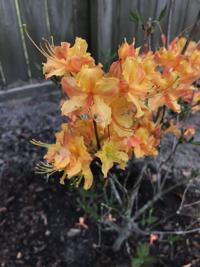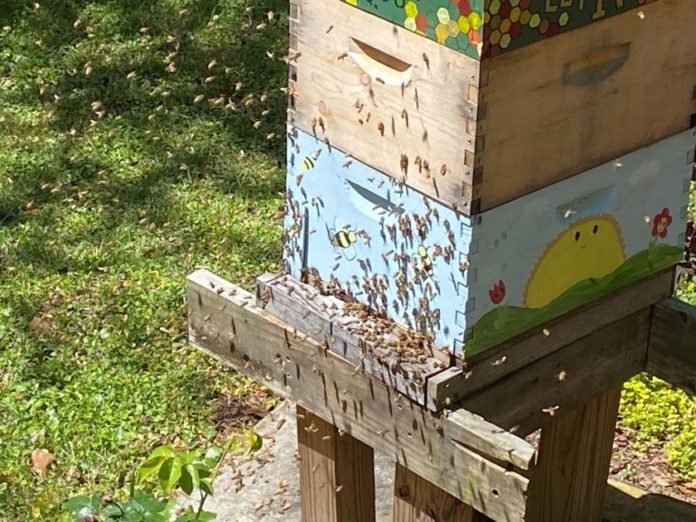It’s been a year since we started beekeeping again.
The hive sits in the backyard with a view from the house. It’s a daily ritual to stand at the window to see them wake up. In the afternoons we sit on the deck and watch them sip water from a dish.
Occasionally, Carolina wrens pluck dead bees from beneath the hive, a source of protein for their young.
When guests come over, many will suit up to inspect the hive.
And, of course, the honey we harvest is a bonus.
One recent sunny afternoon, we noticed the bees were more active than usual. There were so many in flight we could hear them from the side of the house. They were pouring out of the hive to fly circles around the backyard. They were swarming. Or, in other words, they were preparing to leave us.
Swarming commonly occurs in the spring when flowers are prolific and nectar is flowing. It can happen for various reasons. In some cases, when parasites or diseases are an issue, the entire colony will pack up and leave. This is called absconding. If that happened, we’d have an empty hive.
However, when the colony becomes overcrowded only half the bees will swarm. Insects communicate with pheromones, chemicals they detect with antennae. Maybe the queen is getting old, her pheromones are becoming weak. She lives two or three years but they need her to lay plenty of eggs. That’s her job.
If worker bees sense any of these problems they will prepare to swarm by making a new queen. They do this by feeding a larva a special diet called royal jelly that will develop her reproductive organs. They stop feeding the old queen so she’ll lose weight in order to fly. When she’s ready, she’ll take half the colony with her.

The remaining workers will attend to the new queen. There can be only one queen, so, in “Game of Thrones” fashion, she kills any other potential queens before they hatch to take sole possession of the kingdom.
Our new queen will need to mate before she starts laying eggs. She’ll take flight, mate with male bees called drones, and return to assume her place at the head of the table.
Of course something could go wrong before she returns. Something could eat her.
Meanwhile, the old queen and her loyal subjects, following her pheromone trail, will look for a new home. In our case they gathered on a branch at the top of a tree. The workers balled up, called bearding, around the queen and remained, inconspicuous, for about a day. In the meantime, scout bees searched for a suitable home, such as a tree hollow.
Worker bees are not aggressive when swarming. They’re not protecting brood or honey. They completely ignored us in the backyard.
If you find a bearding swarm, just leave it alone. They’ll likely be gone in a day. If, however, they take up residence in an inconvenient location, such as a wall in your house, and start building comb, do not spray them with insecticide. Call a local beekeeper to remove them. You can locate one at https://scstatebeekeepers.com.

We were happy to see plenty of bees were still in our hive. The new queen had successfully assumed her royal duties. If we had to start over, it would cost a couple hundred dollars to purchase a nucleus colony. However, there is a cheaper option: We could capture a swarm.
A swarm box is similar to a hive. It is placed 10 to 15 feet off the ground, often strapped to a tree. It contains frames with honeycomb and a lemon-scented lure to attract scouts. If a scout likes what she sees she’ll tell the queen. Once the queen and her minions arrive at the swarm box the colony can be transferred to a proper hive.
It’s like fishing for bees.
Credit: Source link































